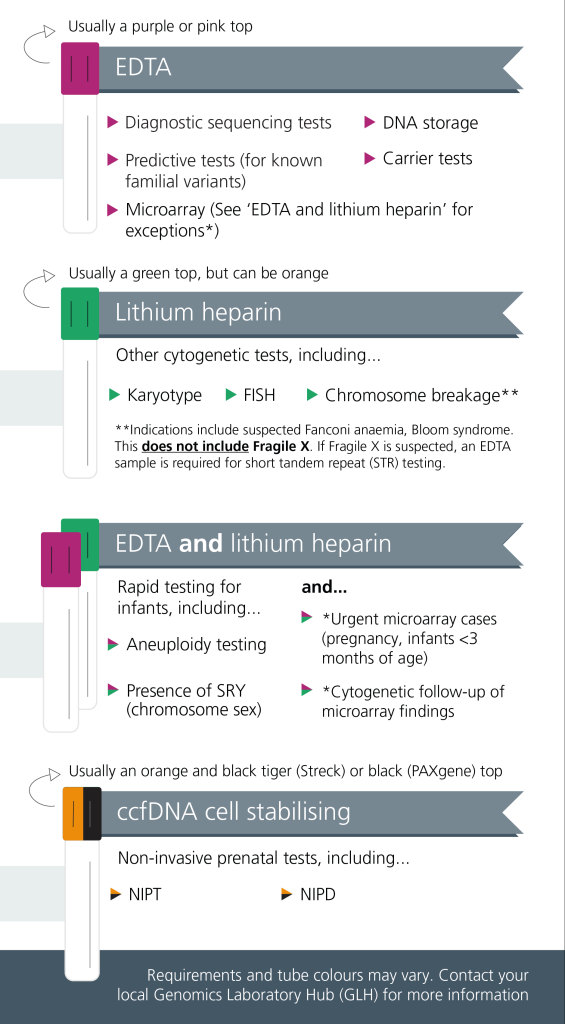Samples for genomic testing in rare disease
Blood samples are used in nearly all cases for genomic testing in rare disease, but there are a few instances where different samples are required.
Overview
For most cases of genomic testing in rare disease, a blood sample is used to obtain genomic material. This isn’t the case for all genomic testing, however, and not all blood sample tubes are appropriate for all types of genomic test.
This article details the blood tubes that should be used for the different genomic tests, and highlights circumstances when a different tissue sample may be required.
Which tube to use for which sample
When taking a blood sample for genomic testing, it’s crucial that the right type of tube is used. Most of the time, DNA-based tests will require the sample to be in an EDTA tube (usually with a purple or pink coloured top), but there are a few scenarios in which a different type of tube is used, either instead of or in addition to the EDTA tube.
Take a look at the graphic below (figure 1) to see a selection of tests and their corresponding tube types. Note that tube top colours can vary, so it’s important to check this locally.
Local specifications may vary, so we recommend familiarising yourself with your local Genomic Laboratory Hub (GLH) guidelines.

Figure 1: Tube types and when to use them
(View larger size)
Samples that aren’t blood
Other samples may be required for different reasons, including prenatal testing and situations where it may be helpful to sample one or more different body tissues.
Sometimes a blood sample is not representative of the rest of the body. Examples could be when someone has had a bone marrow transplant or when there are multiple genetically different populations of cells within one individual (mosaicism). In these situations, a different sample is required for genomic testing.
Other sample types include:
- skin and muscle biopsies;
- products of conception;
- placenta samples;
- placental biopsies;
- chorionic villus samples;
- an amniocentesis sample; and
- saliva.
If you’re ever uncertain about which sample type or tube to use, contact your local GLH for more information.
Remember: It is vital that samples are accompanied by the correct paperwork when they are sent to the laboratory. Read more about how to complete a test order form here.
Key messages
- A blood sample is most commonly used for genomic testing in rare disease, but it is important to ensure that the correct type of tube is used for each test.
- Sometimes samples that aren’t blood are required for testing, depending on the test or the clinical situation.
- If you’re ever uncertain about which sample type or tube to use, contact your local GLH for more information.
Resources
For clinicians
- NHS England Genomics Education Programme (GEP): Genomics in the NHS: A Clinician’s Guide to Genomic Testing in Rare Disease